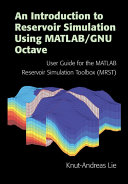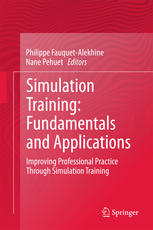Reservoir Engineering The Fundamentals Simulation and Management of Conventional and Unconventional Recoveries 1st Edition by Abdus Satter, Ghulam Iqbal ISBN 0128002193 9780128002193
$50.00 Original price was: $50.00.$25.00Current price is: $25.00.
Reservoir Engineering The Fundamentals Simulation and Management of Conventional and Unconventional Recoveries 1st Edition by Abdus Satter, Ghulam M. Iqbal – Ebook PDF Instant Download/Delivery: 0128002193, 978-0128002193
Full download Reservoir Engineering The Fundamentals Simulation and Management of Conventional and Unconventional Recoveries 1st Edition after payment

Product details:
ISBN 10: 0128002193
ISBN 13: 978-0128002193
Author: Abdus Satter, Ghulam M. Iqbal
Reservoir Engineering focuses on the fundamental concepts related to the development of conventional and unconventional reservoirs and how these concepts are applied in the oil and gas industry to meet both economic and technical challenges. Written in easy to understand language, the book provides valuable information regarding present-day tools, techniques, and technologies and explains best practices on reservoir management and recovery approaches. Various reservoir workflow diagrams presented in the book provide a clear direction to meet the challenges of the profession. As most reservoir engineering decisions are based on reservoir simulation, a chapter is devoted to introduce the topic in lucid fashion. The addition of practical field case studies make Reservoir Engineering a valuable resource for reservoir engineers and other professionals in helping them implement a comprehensive plan to produce oil and gas based on reservoir modeling and economic analysis, execute a development plan, conduct reservoir surveillance on a continuous basis, evaluate reservoir performance, and apply corrective actions as necessary.
- Connects key reservoir fundamentals to modern engineering applications
- Bridges the conventional methods to the unconventional, showing the differences between the two processes
- Offers field case studies and workflow diagrams to help the reservoir professional and student develop and sharpen management skills for both conventional and unconventional reservoirs
Reservoir Engineering The Fundamentals Simulation and Management of Conventional and Unconventional Recoveries 1st Table of contents:
Chapter 1: First Encounter with a Patient
- Focuses on the initial examination and diagnosis process, including how a neurologist responds to consultations and formulates a diagnosis based on the patient’s symptoms.
Chapter 2: Signs of Central Nervous System Disorders
- Discusses signs of lesions in different areas of the central nervous system (CNS), including the cerebral hemisphere, basal ganglia, brainstem, cerebellum, and spinal cord. It also introduces various neurologic illnesses.
Chapter 3: Psychogenic Neurologic Deficits
- Explores the role of the neurologist in diagnosing psychogenic neurologic deficits, addressing potential diagnostic pitfalls.
Chapter 4: Cranial Nerve Impairments
- An overview of impairments to the cranial nerves, including the olfactory, optic, oculomotor, and others. Also includes a section on pseudobulbar palsy.
Chapter 5: Peripheral Nerve Disorders
- Covers peripheral nerve anatomy, various neuropathies, motor neuron disorders, and conditions related to the spine.
Chapter 6: Muscle Disorders
- Discusses neuromuscular junction disorders, muscle diseases (myopathy), and laboratory tests relevant to muscle dysfunction.
Chapter 7: Dementia
- Reviews various dementias, including Alzheimer’s disease, frontal lobe disorders, infections, and pseudodementia. Discusses the challenges in diagnosing Alzheimer’s.
Chapter 8: Aphasia and Anosognosia
- Explores language disorders like aphasia, mental abnormalities related to language, and the impact of right hemisphere syndromes and disconnection syndromes on communication.
Chapter 9: Headaches
- Differentiates between primary and secondary headaches, and covers cranial neuralgias, providing diagnostic insights.
Chapter 10: Epilepsy
- Focuses on different types of seizures, including focal and generalized seizures, and discusses treatments and conditions that may mimic epilepsy.
Chapter 11: TIAs and Strokes
- Discusses transient ischemic attacks (TIAs) and strokes, their neuropsychological effects, altered consciousness, and stroke management.
Chapter 12: Visual Disturbances
- Covers common visual disturbances related to the nervous system, including glaucoma, cortical blindness, diplopia, and Horner’s syndrome.
Chapter 13: Congenital Cerebral Impairments
- Examines congenital brain disorders like cerebral palsy, neurocutaneous disorders, and the effects of environmental toxins.
Chapter 14: Neurologic Aspects of Chronic Pain
- Analyzes different types of pain and their neurological underpinnings, as well as treatments for both cancer and non-cancer pain syndromes.
Chapter 15: Multiple Sclerosis
- Discusses the etiology, clinical manifestations, psychiatric comorbidities, laboratory tests, and treatment options for multiple sclerosis (MS).
Chapter 16: Neurologic Aspects of Sexual Function
- Reviews how neurologic impairments can affect sexual function, the role of the limbic system, and associated underlying conditions.
Chapter 17: Sleep Disorders
- Explores normal sleep patterns, various sleep disorders, including breathing-related and parasomnias, and indications for polysomnography.
Chapter 18: Involuntary Movement Disorders
- Covers movement disorders involving the basal ganglia, such as Parkinson’s disease, chorea, dystonia, and myoclonus, as well as psychogenic movements.
Chapter 19: Brain Tumors, Metastatic Cancer, and Paraneoplastic Syndromes
- Discusses the symptoms, diagnosis, and management of brain tumors, metastases, and paraneoplastic syndromes.
Chapter 20: Lumbar Puncture and Imaging Studies
- Describes procedures like lumbar puncture and imaging studies (CT, MRI, PET, etc.) used in neurologic diagnosis.
Chapter 21: Neurotransmitters and Drug Abuse
- Examines the role of neurotransmitters in the brain and their relation to drug abuse, with a focus on various types of neurotransmitters and the neurologic aspects of addiction.
Chapter 22: Traumatic Brain Injury
- Reviews the impact of major and minor head trauma, whiplash, and related conditions, with a focus on diagnostic and treatment strategies.
Appendix 1: Patient and Family Support Groups
- Provides a list of resources for patients and families dealing with various neurologic conditions, including Alzheimer’s disease, epilepsy, stroke, and multiple sclerosis.
Key Themes and Concepts
- Neurologic Diagnosis: Emphasizes the critical role of accurate and timely diagnosis in managing neurological conditions, from initial patient encounter through advanced imaging and laboratory tests.
- Central Nervous System Lesions: The signs of lesions in different CNS regions are key to diagnosis, and the text explores each area in-depth.
- Psychogenic and Functional Disorders: Discusses how psychological factors can influence neurologic symptoms, with a focus on distinguishing between organic and functional causes.
- Movement Disorders: A significant portion of the text focuses on involuntary movement disorders, including Parkinsonism, tremors, dystonia, and tics.
- Neurologic Disorders in Aging: Dementia and other neurodegenerative diseases like Alzheimer’s disease are thoroughly explored, highlighting diagnostic challenges and treatments.
- Sleep, Pain, and Sexual Function: Addresses how neurological conditions affect sleep patterns, pain processing, and sexual function, emphasizing the need for a multidisciplinary approach to care.
- Headaches and Seizures: The book covers common neurologic complaints like headaches and epilepsy, providing insight into their management and differential diagnosis.
People also search for Reservoir Engineering The Fundamentals Simulation and Management of Conventional and Unconventional Recoveries 1st:
tarek ahmed reservoir engineering pdf
fundamentals of reservoir engineering
applied petroleum reservoir engineering
geothermal reservoir engineering
reservoir engineering aspects of waterflooding
Tags:
Abdus Satter,Ghulam Iqbal,Reservoir,Engineering,Fundamentals,Simulation,Management,Conventional,Unconventional,Recoveries 1st
You may also like…
Business & Economics
Engineering Psychology - Pedagogy
Politics & Philosophy - Social Sciences
Engineering
Fundamentals of machining processes conventional and nonconventional processes Third Edition El-Hofy
Politics & Philosophy
Commercial & Financial Law
Damages, Recoveries and Remedies in Shipping Law 1st Edition Soyer











